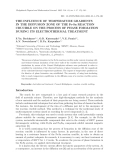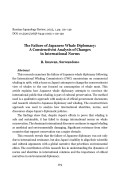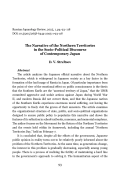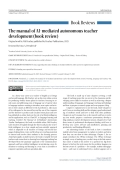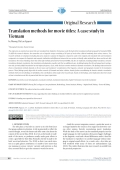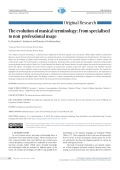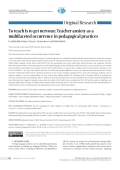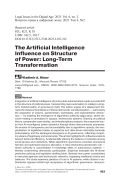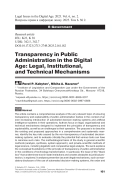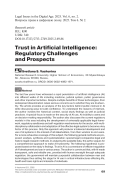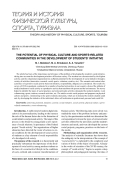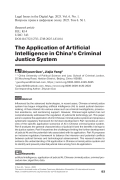The process of phase formation in the Fe-Sn reaction crucible under current stressing with and without thermal insulation of the outer walls of the crucible was studied. Numerical simulations by means of the Comsol Multiphysics software were performed in order to establish the correlation of the observed features of phase formation with the magnitude of the calculated internal temperature gradients. The impact of temperature gradients on the kinetics of phase formation was established. The necessity of using heat-insulating felts to reach temperature equilibrium in the diffusion zone of a reaction crucible system was demonstrated.
This research examines the failure of Japanese whale diplomacy following the International Whaling Commission’s (IWC) moratorium on commercial whaling in 1986, with a focus on Japan’s attempts to change the conservationist view of whales to the one focused on consumption of whale meat. This article explains how Japanese whale diplomacy attempts to convince the international public that whaling is part of cultural preservation. The method used is a qualitative approach with analysis of official government documents and research related to Japanese diplomacy and whaling. The constructivism approach was used to analyze how international identities, norms, and discourses shape Japan’s diplomatic policies.
The findings show that, despite Japan’s efforts to prove that whaling is safe and sustainable, it has failed to change international norms on whale conservation. The dominant international discourse continues to regard whaling as unethical and environmentally damaging. Significant resistance from other countries that support conservation was a major obstacle.
This research reveals that the failure of Japanese diplomacy was not only due to international resistance, but also Japan’s inability to align their scientific and cultural arguments with a global narrative that prioritizes environmental ethics. The contribution of this research lies in understanding the dynamics of norms and identities in international relations and the importance of ethical narratives in environmental diplomacy.
The article analyzes the Japanese official narrative about the Northern Territories, which is widespread in Japanese society as a key factor in the formation of the bad image of Russia in Japan. Of particular importance from the point of view of the emotional effect on public consciousness is the thesis that the Southern Kurils are the “ancestral territory of Japan,” that the USSR committed aggressive and unfair actions against Japan during World War II, and modern Russia did not correct them, and that the Japanese natives of the Southern Kurils experience enormous moral suffering, not having the opportunity to freely visit the graves of their ancestors. The article examines the organizational structure of state, public, and socio-political organizations designed to ensure public policy to popularize this narrative and shows the features of its reflection in school textbooks, museums, and memorial complexes. The author focuses on the Movement for the Return of the Northern Territories and the events held within its framework, including the annual “Northern Territories Day,” held on February 7.
It is concluded that, despite all the efforts of the government, Japanese public opinion in reality turns out to be relatively poorly informed about the problem of the Northern Territories. At the same time, as generations change, the interest in this problem is gradually decreasing, especially among young people. There is a process of realizing the futility of maintaining a hard line in the problem, related to visits to graves by former islanders and members of their families, causes the greatest public outcry, but even this aspect, as the results of public opinion polls show, has a limited effect. government’s approach to solving it. The humanitarian aspect of the
In a thirty-year career as a teacher of English as a foreign and second language, Nik Peachey set up his own online system for producing weekly lesson plans for teachers, focusing on social issues and addressing areas of language use of special value to language teachers wanting to introduce new topics and activities to their classes at different levels of proficiency. Like many of his colleagues, he has moved beyond the use of the computer and the Internet to produce and circulate lesson plans and now has published an online book on the role of artificial intelligence and its applications, such as ChatGPT, in language learning and teaching. Entitled The Manual of AI-Mediated Autonomous Teacher Development, the book is available online. Nik Peachey takes teachers of English through the theory and practice of artificial intelligence in a clear, simple and non-scientific approach which is adaptable to all teachers of foreign and second languages helping them create and develop new teaching materials to interest and involve their students in the learning process.
The study aims to examine how movie titles are translated from English to Vietnamese under the light of the translation methods proposed by Newmark (1988). To fulfil this research objective, the researcher uses a linguistic corpus consisting of 83 pairs of movie titles collected randomly from various sources. Two research methods are employed, including discourse analysis to analyse the linguistic components used in the original and translated titles and translation comparative to compare the linguistic and semantic similarities and differences between the two versions to identify what methods have been used in each title translation. The research findings show that of the eight methods presented by Newmark (1988), only five are employed, including faithful translation, semantic translation, idiomatic translation, free translation and adaptation, together with the two additional ones, including keeping the title unchanged and creating a new title, of which faithful translation has the highest frequency of use, while the least common method is idiomatic translation. The findings indicate that the choice of translation methods depends on the text types and translators’ consideration of the linguistic, semantic and pragmatic transfer in the translation process. These findings partly align with the earlier research of Newmark and other scholars, thereby further consolidating the theories related to translation methods while some new findings are identified as the contributions of this study to the research topic. Based on the findings, some implications have been made on how to translate movie titles in general and other text types in particular.
The evolution of musical terminology is a dynamic process influenced by historical, linguistic and social factors. While initially confined to professional discourse, musical terms have been increasingly used in non-professional contexts, necessitating further investigation into this phenomenon. This study aims to analyse the development of English musical terminology, focusing on its transformation from specialised technical vocabulary to broader cultural and communicative usage. The research employs a combination of comparative-historical analysis, textual analysis and lexicographic examination. Drawing upon sources including seminal works by Charles Ives, Charles Stanford, John Mauceri and Norman Lebrecht, the study explores how musical terms function across genres and registers. The findings reveal three primary categories of musical terms: universal, unique and author. Universal terms maintain consistent meanings across musical traditions, unique terms emerge from specific musical schools and authorial terms reflect individual creativity. The research also highlights how determinologisation and dissemination processes influence the reinterpretation of musical terms in non-professional texts. The implications of this study emphasise the dynamic role of musical terminology as a bridge between professional and non-professional communication, implying its significance in both linguistic theory and global culture. The findings contribute to a deeper understanding of terminological adaptation in evolving communicative landscapes and pave the way to further research into the role of musical terms in interdisciplinary contexts.
Anxiety is a multifaceted phenomenon that necessitates a systematic approach to its examination by delving deeper into the experiences of those who encounter it. The study used a mixed method design to address teacher anxiety by employing questionnaires, interviews, and classroom observations based on Horwitz’s (1996) Foreign Language Teacher Anxiety Scale (FLTAS). First, the questionnaire was used to collect data. Second, interviews were conducted. Third, the observation phase took place. The study participants were 240 English language teachers (110 female and 130 male) with 2 to 5 years of experience at the tertiary level. Quantitative results indicate a great degree of teacher anxiety. Male teachers, on average, report a higher anxiety level than female counterparts on the FLTAS. As 0.000975 < 0.05, the p-value indicates that there is a statistically significant difference in mean scores between female and male teachers’ anxiety. Interviews revealed that English teachers experienced anxiety for various reasons, including unprepared lessons and a lack of language proficiency, fear of negative evaluation, a sense of unpreparedness for class, anxiety about making mistakes, the challenges faced by language teachers in managing the classroom, and uncertainty about language skills. An analysis of classroom observations from 10 classes yielded that most teachers harboured apprehension about being observed, struggled to manage a large number of students in their English classes, ranging from 150 to 250 students, spoke at a rapid pace, and frequently employed the technique of avoiding student inquiries during the teaching process. The current research concludes with future recommendations to minimise teacher anxiety in teaching practices by engaging them in pre and post-professional training.
Integration of artificial intelligence (AI) into public administration marks a pivotal shift in the structure of political power, transcending mere automation to catalyze a longterm transformation of governance itself. The author argues AI’s deployment disrupts the classical foundations of liberal democratic constitutionalism — particularly the separation of powers, parliamentary sovereignty, and representative democracy — by enabling the emergence of algorithmic authority (algocracy), where decisionmaking is centralized in opaque, technocratic systems. Drawing on political theory, comparative case studies, and interdisciplinary analysis, the researcher traces how AI reconfigures power dynamics through three interconnected processes: the erosion of transparency and accountability due to algorithmic opacity; the marginalization of legislative bodies as expertise and data-driven rationality dominate policymaking; and the ideological divergence in AI governance, reflecting competing visions of legitimacy and social order. The article highlights AI’s influence extends beyond technical efficiency, fundamentally altering the balance of interests among social groups and institutions. While algorithmic governance promises procedural fairness and optimized resource allocation, it risks entrenching epistocratic rule — where authority is concentrated in knowledge elites or autonomous systems — thereby undermining democratic participation. Empirical examples like AI-driven predictive policing and legislative drafting tools, illustrate how power consolidates in executive agencies and technocratic networks, bypassing traditional checks and balances. The study examines paradox of trust in AI systems: while citizens in authoritarian regimes exhibit high acceptance of algorithmic governance, democra-cies grapple with legitimacy crises as public oversight diminishes. The author contends “new structure of power” will hinge on reconciling AI’s transformative potential with safeguards for human dignity, pluralism, and constitutionalism. It proposes a reimagined framework for governance — one that decentralizes authority along thematic expertise rather than institutional branches, while embedding ethical accountability into algorithmic design. The long-term implications demand interdisciplinary collaboration, adaptive legal frameworks, and a redefinition of democratic legitimacy in an era where power is increasingly exercised by code rather than by humans.
The article contains a comprehensive analysis of the very relevant topic of ensuring transparency and explainability of public administration bodies in the context of an ever-increasing introduction of automated decision-making systems and artificial intelligence systems in their operations. Authors focus on legal, organisational and technical mechanisms designed to implement the principles of transparency and explainability, as well as on challenges to their operation. The purpose is to describe the existing and proposed approaches in a comprehensive and systematic manner, identify the key risks caused by the non-transparency of automated decisionmaking systems, and to evaluate critically the potential that various tools can have to minimise such risks. The methodological basis of the study is general scientific methods (analysis, synthesis, system approach), and private-scientific methods of legal science, including legalistic and comparative legal analysis. The work explores the conceptual foundations of the principle of transparency of public administration in the conditions of technology transformation. In particular, the issue of the “black box” that undermines trust in state institutions and creates obstacles to juridical protection, is explored. It analyses preventive (ex ante) legal mechanisms, such as mandatory disclosure of the use of automated decision-making systems, the order and logic of their operation, information on the data used, and the introduction of preaudit, certification and human rights impact assessment procedures. Legal mechanisms for ex post follow-up are reviewed, including the evolving concept of the “right to explanation” of a particular decision, the use of counterfactual explanations, and ensuring that users have access to the data that gave rise to a particular automated decision. The authors pay particular attention to the inextricable link between legal requirements, and institutional and technical solutions. The main conclusions are that none of the mechanisms under review are universally applicable. The necessary effect may only be reached through their comprehensive application, adaptation to the specific context and level of risk, and close integration of legal norms with technical standards and practical tools. The study highlights the need to further improve laws aimed at detailing the responsibilities of developers and operators of the automated decision-making system, and to foster a culture of transparency and responsibility to maintain public administration accountability in the interests of society and every citizen.
The last few years have witnessed a rapid penetration of artificial intelligence (AI) into different walks of life including medicine, judicial system, public governance and other important activities. Despite multiple benefits of these technologies, their widespread dissemination raises serious concerns as to whether they are trustworthy. The article provides an analysis of the key factors behind public mistrust in AI while discussing ways to build confidence. To understand the reasons of mistrust, the author invokes the historical context, social study findings as well as judicial practices. A special focus is made on the security of AI use, AI visibility to users and on decision-making responsibility. The author also discusses the current regulatory models in this area including the development of universally applicable legal framework, regulatory sandboxes and self-regulation mechanisms for the sector, with multidisciplinary collaboration and adaptation of the effective legal system to become a key factor of this process. Only this approach will producer a balanced development and use of AI systems in the interest of all stakeholders, from their vendors to end users. For a more exhaustive coverage of this subject, the following general methods are proposed: analysis, synthesis and systematization; special legal (comparative legal and historic legal) research methods. In analyzing the available data, the author argues for a comprehensive approach to make AI trustworthy. The following hypothesis is proposed based on the study’s findings. Trust in AI is a cornerstone of efficient regulation of AI development and use in various areas. The author is convinced that, with AI made transparent, safe and reliable one, provided with human oversight through adequate regulation, the government will maintain purposeful collaboration between man and technologies thus setting the stage for AI use in critical infrastructures affecting life, health and basic rights and interests of individuals.
The article has basis of the importance and relevance of the problem of developing the student’s social initiative, taking into account the development priorities of Russian society. The students are characterized by the highest activity, and the educational organization has sufficient potential for the development of social initiative through a variety of activities (innovative, research, social, sports, volunteer, creative, etc.). The semantic and content characteristics of a person’s social activity based on initiative, responsibility, diligence are considered. The results of a survey of 2130 respondents, conducted in a number of medical universities in our country, showed the attitude of medical students to social activity as a productive activity that transforms the person and the environment. The survey helped to identify the types of social practices and extracurricular activities demanded by medical students: event volunteering, sports, tourism, research activities, etc. The article reveals social projects and programs on physical culture and sports, volunteering in the sports-related community, which are in demand by modern student youth and, by developing the initiative of the individual, allow self-realization in professional, personal and social life.
Influenced by the advanced technologies, in recent years, Chinese criminal justice system has begun integrating artificial intelligence (AI) to assist judicial decisionmaking. AI has entered into various areas such as criminal investigations, prosecution assistance, and sentencing support. However, Chinese legal system has not comprehensively addressed the regulation of judicial AI technology yet. This paper aims to explore the application of AI in Chinese criminal justice system and propose a systematic regulatory framework for its future development. Part I provides an overview of the specific application scenarios of AI in Chinese criminal justice system. Part II analyzes the general characteristics of judicial AI and the benefits it brings to the justice system. Part III examines the challenges limiting the further development of judicial AI and the potential risks associated with its application. Part IV proposes an inclusive regulatory framework to balance the intension and potential conflicts between judicial fairness and technological advancement. This research seeks to enhance the understanding of AI application in Chinese criminal justice system and to identify and prevent potential judicial risks arising from AI application.
